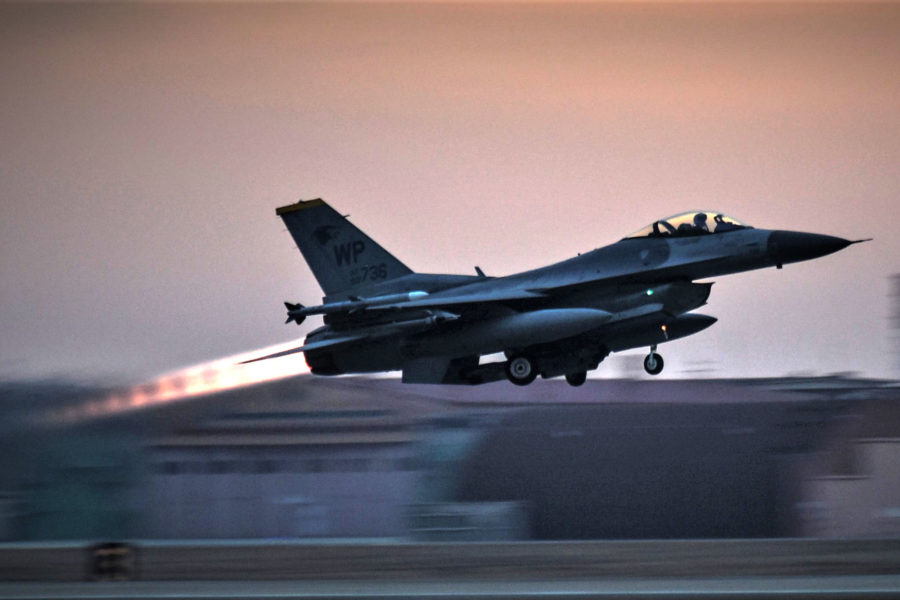When an F-16 fighter jet crashed into the Yellow Sea off the coast of South Korea on Jan. 31, 2024, it was because of a hardware failure that stalled the engine, which the pilot could not get started again despite multiple attempts, according to an investigation report released Aug. 22.
The pilot ejected from the aircraft and was treated for hypothermia but was otherwise unhurt, the report said. But tail number 89-2013, valued at about $25.8 million, was never found.
The mishap pilot was the fourth in a four-ship formation of F-16s assigned to the 8th Fighter Wing that took off from Kunsan Air Base, South Korea, at 8 a.m. that day on a training sortie. About a half-hour later, the formation met a KC-46 refueling tanker, where the mishap pilot was the last in line to get gas.
The pilot, who had about 1,352 flight hours on the F-16 by that point, connected with the tanker three times and got 1,700 pounds of gas. But on the third contact, at 8:32 a.m., he felt and heard a loud bang inside his aircraft, and nearby aircrew saw a flash from the F-16’s nose and tail sections and a puff of black smoke from the engine exhaust.
“I felt a pretty loud bang here,” he said. “What happened?”
The pilot separated from the tanker and the “ENGINE MACH FAIL” light illuminated on his instrument panel as the engine’s revolutions per minute nose-dived and the engine lost power, which meant he could not maintain altitude and airspeed.
At the time, the F-16 was about 24,000 feet over the water, which gave him 30 nautical miles (34.5 miles) of gliding time, but the nearest airfield was 64 nautical miles away. The pilot dropped his spare gas tanks to lighten the load as he descended while attempting to restart the engine. Making matters more complicated, the F-16’s heads-up display and several navigation tools were down, so the mishap pilot depended on another F-16 in the formation to keep track of where he was going.
By 8:37 a.m., the pilot had tried restarting the engine several times without success. He was at 7,000 feet and not going fast enough to make an airfield. At 8:39, seven minutes and seven seconds after the loud bang, the pilot punched out about 2,000 feet over the water, shortly before the F-16 finally stalled and crashed. A Korean Coast Guard helicopter hoisted the pilot out of the water at 9:17 a.m. and flew him to U.S. Army Garrison Humphreys, where he was treated for hypothermia and stayed at the hospital there overnight for observation.
Without the aircraft, its memory unit, or flight control computer, the exact cause of the engine malfunction may never be known. Investigators found no discrepancies, overdue inspections, or other red flags in the 35-year-old fighter jet’s recent maintenance history.
There was no indication of failure prior to takeoff and no discrepancies in the equipment used to service the F-16’s fuel and hydraulic fluid before the flight, nor in the KC-46’s fuel supply. Maintenance personnel did their job to the letter. Investigators wondered whether the pilot’s control inputs prior to ejection were effective, but it is impossible to say without the aircraft. The investigation board attributed the engine stall to an unspecified hardware failure.


